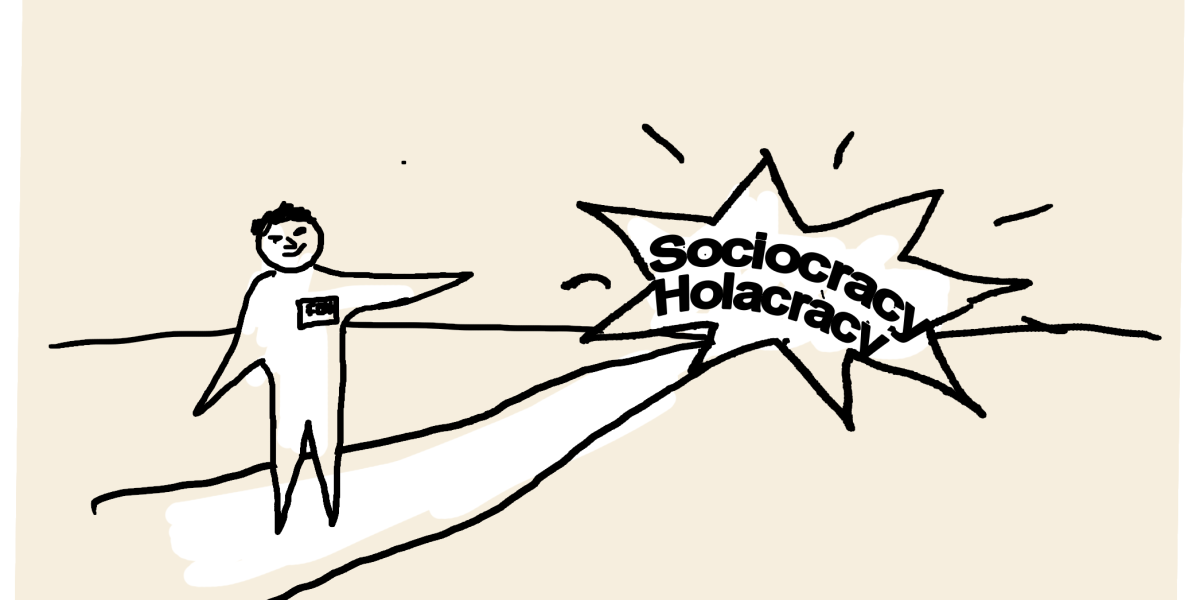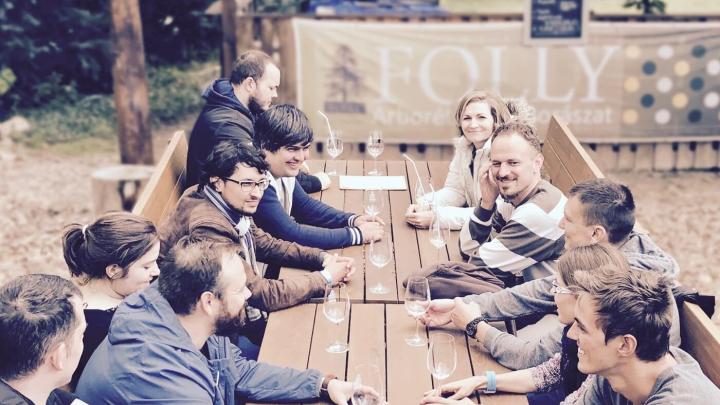
Over the past few months, I've started to think about scaling the operations we've built up over several years of organic development at Integral Vision. There are twenty of us now; what happens when we are thirty or forty? Will we still be able to decide on new projects and new joiners? How can we build an organizational structure so that decisions can be made where the real work is done?
The two best-known models for scaling self-organizing firms are sociocracy and holacracy. The former are typically found in civic initiatives; the latter is more commonly seen proliferating among IT firms. Ferenc Kiss has written a comprehensive book on these two organizational models. Its strength is that it uses precise terminology to outline knowledge that is otherwise difficult to access and can typically be acquired through training. For me, it is an essential reference at a time when the current agile operational frameworks are proving inadequate to resolve organizational tensions. Please welcome the transcript of the conversation with him!
Where did you get the idea to write this book?
It goes back to 2011. I attended an eco-village design workshop in Canada, presented by Diana Leafe Christian. She lives in an eco-village in the US and is concerned with what makes one in 10 initiatives survive. At that workshop, she mentioned sociocracy and also made a brief reference to holacracy.
Can you explain a little bit what exactly you mean by sociocracy?
An organizational model based on decision-making circles, in which corporate processes are linked through leaders and representatives, is called a double bind. At the time, I had been looking for a "recipe" for a well-functioning eco-village for years, so I was very excited because I knew that there were many problems in communities, especially with decision-making. I felt that I had found something significant that was important and an answer to my questions. I decided to get the word out.
Did you have an impression of how this works? Or did you mainly see a theoretical model of it?
Decision-making was just one of many topics at that multi-day workshop. Still, then as life would have it, I spent six months in an eco-community in Quebec. They were learning and practicing sociocracy to help them make their meetings and collective decision-making more effective.
You told me earlier that it was an enlightening experience. What exactly did you mean by that?
I spent several years in a religious community that was very progressive in its approach, but after a while, I began to feel the conflict between the individual and the community, the individual and the organization. Despite our efforts for dialogue and participation, there was a significant separation between management and implementation, which became unbearably overwhelming for me. It seemed to me that sociocracy offered an alternative.
Who was the leader who made the decisions, was not among the implementers? Am I right then in understanding that there was a bit of a disconnect in leadership?
Not a little! There were multiple levels of decision-making, and the lower classes were pretty much just there to serve up the actions they had figured out above to the level below them and "inspire" those at the next level down.
We might as well substitute this problem into the lives of companies...
Of course! After a while, I felt that this way of working was becoming increasingly uncomfortable because I was not involved in the decisions on a substantive level.
So you are saying that the decision-makers at the top of the hierarchy try to "wrestle" the emotional charge out of it?
Instead of delegating decisions to different parts of the organization to make action plans locally, it rolls them from top to bottom.
To put it briefly - sociocracy offers what is different?
The answer I have come up with is that it is possible to combine operational governance with a traditional structure with distributed local decision-making. In other words, you can combine fast and efficient active management with employee participation. In this way, the community and organizational dimensions can be combined.
After all these years, have these promises been fulfilled?
I think a lot depends on who uses these models and for what. It was a backward situation in the Quebec community because they only wanted to adopt the sociocratic decision-making process. Still, they did not have the structure of sociocratic decision-making, so they stuck with plenary decision-making. Furthermore, there was no separation between operational and policy decisions, so everyone was still involved in all decisions.
Trying to translate this to our situation... We scrum, we have a company-wide retrospective (plenary) every two weeks where we decide together on issues that affect the company. The question often arises of what will happen when too many of us retrospect together. How can this involvement be maintained with a larger team?
After a while, when it's too much for a team to have everyone decide everything because they are noticeably starting to cross a growth threshold, it's probably worth starting to think in terms of organizational units.
What are the decision areas to keep, what are the ones not to keep? How can this be separated? For me, there is no evidence as to who considers what to be cardinal issues...
I think it is best for each collective, headed by the leader or leaders, to consider from time to time which decisions are shared decisions and which are considered to be the competence of the leaders. These may be changed from time to time as conditions change. There is always a dilemma as to how the personality and charisma of the pioneering era, i.e., the community quality, can be transferred to the formal framework.
Can holacracy and sociocracy resolve such dilemmas?
These two methodologies delegate decision-making bodies to departments and incorporate a representation system into the organization. It seems to me that we are dealing with a possible organizational adaptation of participatory democracy. At least, that is what I have concluded from my research over the past years.
What are your hopes for the book? For whom are you aiming at, and who might find it helpful to read it?
I have three categories in mind, the first being intensive communities that also manage resources, such as eco-farms and cohousing. These are the communities with postmodern values that are directly affected by this topic. It will also be helpful for progressive business leaders looking for ways to organize themselves and be more humane and for organizational developers who want to help organizations do just that.
Thank you very much for the discussion! You can order the book here:http://www.socio-hola.hu
Share with your friends!


